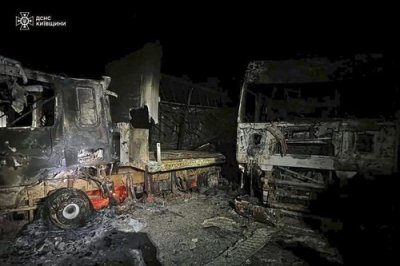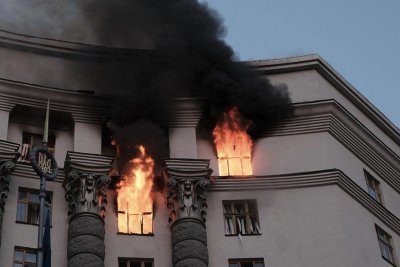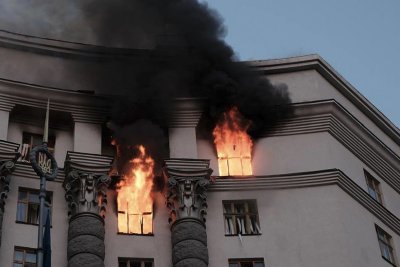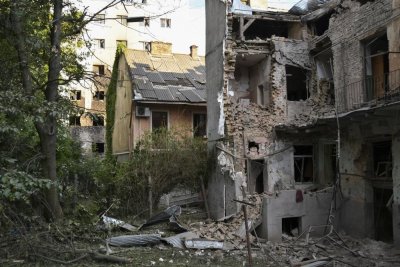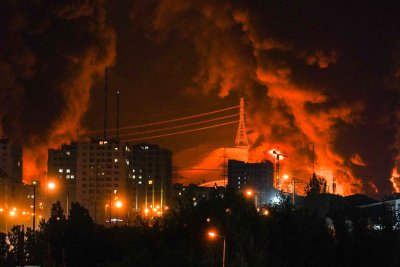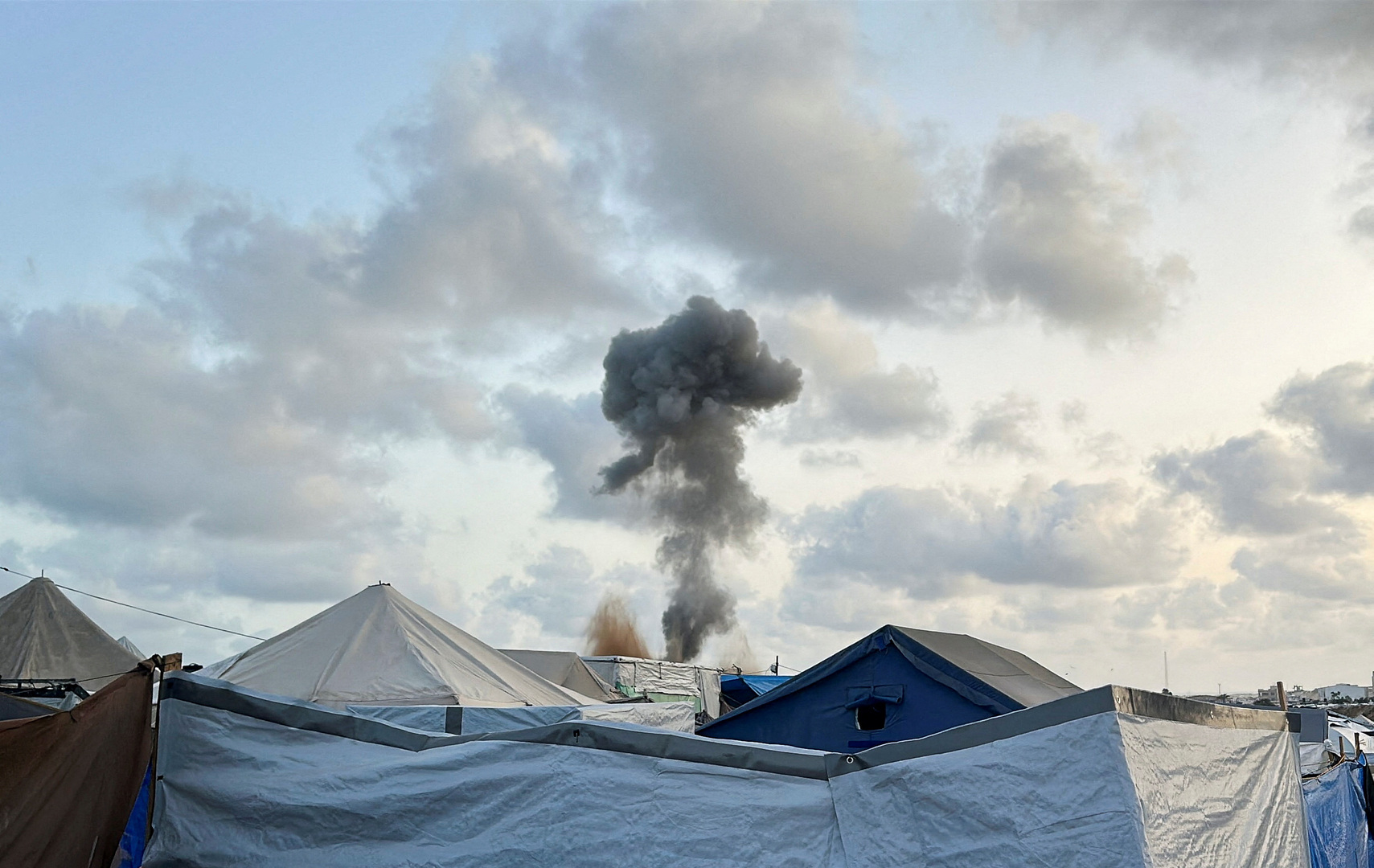A handout photo released by the press service of the State Emergency Service of Ukraine shows smoke rising over the buildings housing Ukraine’s cabinet in Kyiv, on Sunday. Photo by State Emergency Service of Ukraine/EPA
Sept. 7 (UPI) — A Russian airstrike hit and damaged the upper floors of the Ukraine Cabinet of Ministers building in Kyiv for the first time since the war began in February 2022.
The building is among the most prominent Ukrainian government buildings and houses the offices of the executive branch’s top officials, including the prime minister and cabinet ministers. The strike is significant because it shows Moscow’s strikes can reach the heart of Kyiv’s government district, hitting a central symbol of executive authority.
Ukrainian President Volodymyr Zelensky said in a statement Sunday that the strike on the cabinet building was part of a sweeping attack on cities across the country, including Sumy, Kremenchuk, Odesa, Dnipro, Kryvyi Rih and Zaporizhzhia.
Russia used more than 800 drones, as well as four ballistic missiles and nine cruise missiles in the attack, making it the largest such strike since the war began, the Ukrainian Defense Ministry said in its own statement.
At least four people were killed in the broader airstrike, Zelensky said in an earlier statement. The Ukrainian Defense Ministry said that at least one of the people killed was a child.
“In Kyiv, the rubble is still being cleared — there may still be bodies beneath it. The Cabinet of Ministers building has been damaged. As of now, more than forty people have been reported injured across the country, 20 of them in Kyiv,” Zelensky said.
Yulia Svyrydenko, who has served as prime minister of Ukraine since July 17, shared photos of the destruction on Telegram and said that there were no injuries at the cabinet building during the broader airstrike.
“Russian terror will not stop the work of the government,” she said. “We will restore the destruction. But the lives of Ukrainians cannot be brought back. During the night, four people were killed and more than 44 were injured across the country due to Russian shelling.”
Zelensky said that air raid sirens in the capital alone lasted for more than seven and a half hours, suggesting that Russian President Vladimir Putin used the strike to test whether the world would tolerate escalating attacks by Moscow as he praised the response of Western allies who decried the airstrike. He also called for sanctions and tariffs on Russia.
British Prime Minister Keir Starmer condemned the attack as a “brutal overnight assault on Kyiv and across Ukraine,” stressing that “for the first time, the heart of Ukraine’s civilian government was damaged,” and warning that Putin “believes he can act with impunity” and “is not serious about peace.”
French President Emmanuel Macron similarly denounced the strikes on social media, stating that “Russia, meanwhile, is locking itself ever deeper into the logic of war and terror,” and affirmed that “together with Ukraine and our partners, we stand for peace.”
Russia’s Defense Ministry said Sunday that it carried out a large-scale strike with precision weapons and drones against facilities used to produce, store and launch unmanned aircraft, as well as military airbases across central, southern and eastern Ukraine.
The ministry said the attack included strikes on an industrial plant on the western outskirts of Kyiv and a logistics center on the city’s southern edge.
It said all intended targets were destroyed and stressed that no other sites inside Kyiv were hit, making no mention of any government structures in Kyiv.
Separately, Russia’s Defense Ministry said in a statement that Ukraine attempted a large-scale overnight drone attack overnight into Sunday, with its air defenses shooting down 69 unmanned aircraft across southern and central Russia.
The ministry said the drones were intercepted over Krasnodar, Voronezh, Belgorod, Astrakhan, Volgograd, Rostov, Bryansk, Kursk and Ryazan regions, as well as over Crimea and the Sea of Azov.
In its daily summary of war accomplishments, Russia claimed that its troops advanced in eastern and southern Ukraine, capturing the village of Khoroshe in the Dnipropetrovsk region and striking Ukrainian units across Donetsk, Zaporizhzhia and Kherson. The ministry claimed hundreds of Ukrainian soldiers were killed in the fighting, along with tanks, armored vehicles, artillery and supply depots destroyed.
It said Russian air and missile forces also hit Ukrainian military-industrial sites, drone bases and transport hubs in nearly 150 locations, while air defenses intercepted three U.S.-made HIMARS rockets, guided bombs and more than 200 drones.
